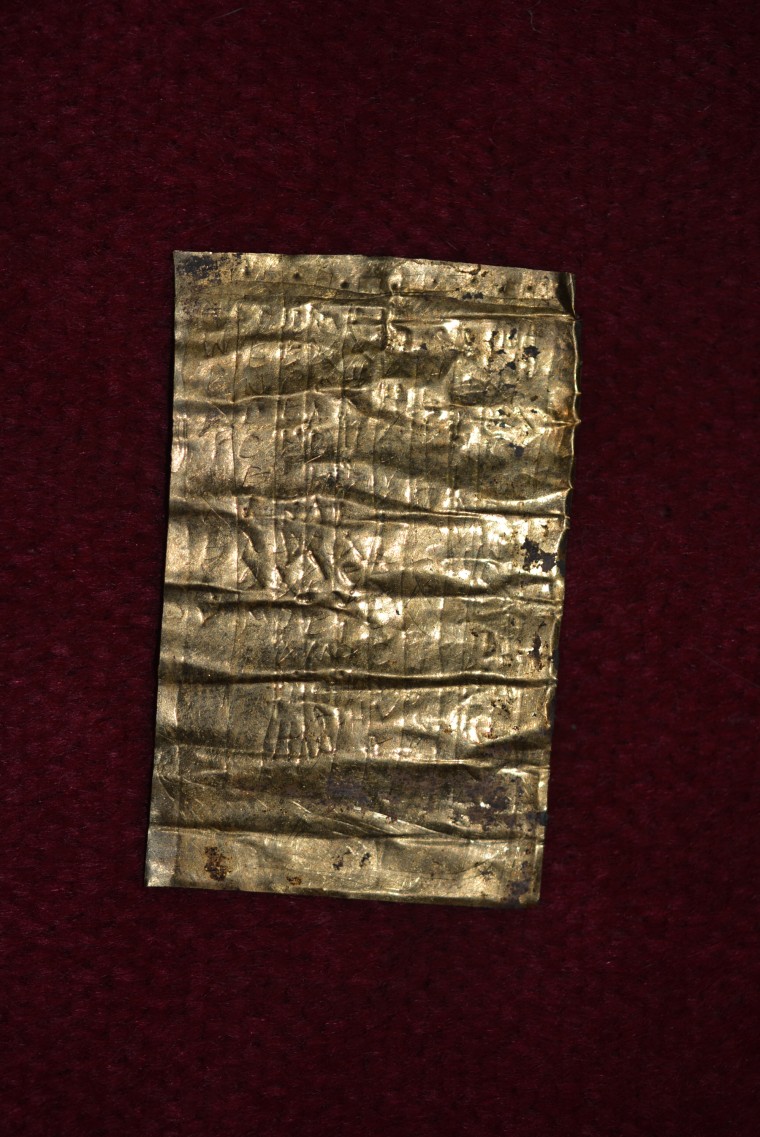BELGRADE, Serbia — So-called "curse tablets" made of gold and silver have been discovered in Roman tombs, archaeologists said.
The finds were made at the Viminacium archaeological site in eastern Serbia, the location of the former capital of the Roman province of Moesia Superior.

Romans used them to curse their neighbors, relatives or unrequited loves.
The beginning of the inscription on one of items — which are known as "tabella defixionis" in Latin — reads: "Let all the forces and demons help that ..."
Some are written in Greek but they also they feature an incomprehensible language and symbols. Experts believe those were likely invented by the person who made the tablet, so its message could only be understood by gods and demons.
However, the find is considered significant because previous examples of the tablets were inscribed in lead — a much less valuable substance.
"This is a very important archaeological discovery because it shows us how luxurious the life in Viminacium was or how much hope they had in the 'curse tablets' so that they used precious metals," Miomir Korac, the chief archaeologist at the Viminacium site, told NBC News. "According to my knowledge, such tablets have never been found inscribed in gold anywhere. According to the Roman customs, gold was never put into graves."
Korac noted that people who live in that part of Serbia today are known for being superstitious.
He added: "Opposing deities appear on these tablets, as if invoking both Christ and the Antichrist today, or Christ and pagan gods, and that is weird. This shows us that the process of converting to Christianity was slow."

Experts believe that that Viminacium had close to 40,000 inhabitants in the 4th century A.D. — the period in which the tablets were made.
That made the city "bigger by a third than Pompeii," Korac said, comparing Viminacium to modern London as it was home to people from "a mix of different nations."
He added: "We found that Christians and pagans were buried together and we can conclude that, at the time, they lived in harmony and tolerance."
However, within about 100 years the city was destroyed by the wave of incoming Huns following by the invasion of the Slavs in the 6th century A.D.